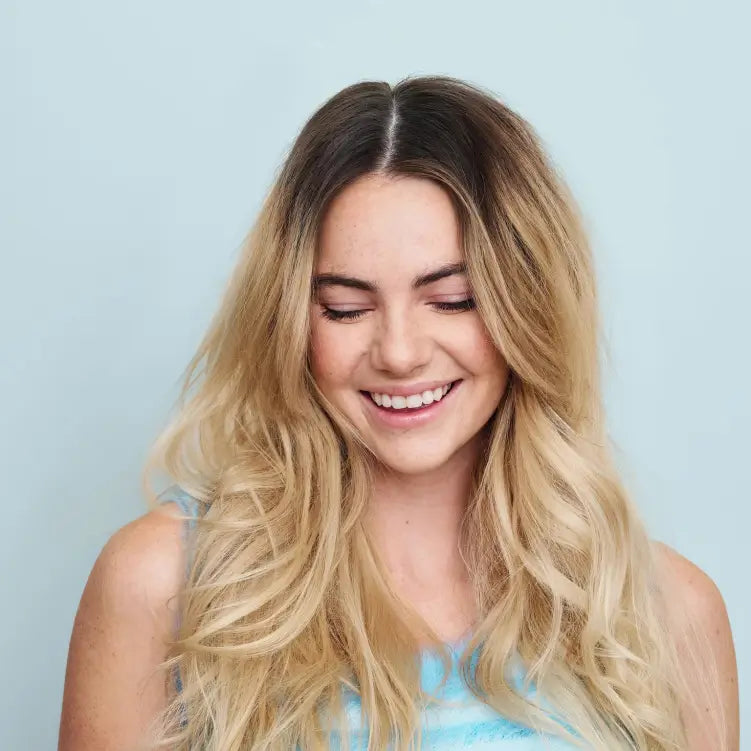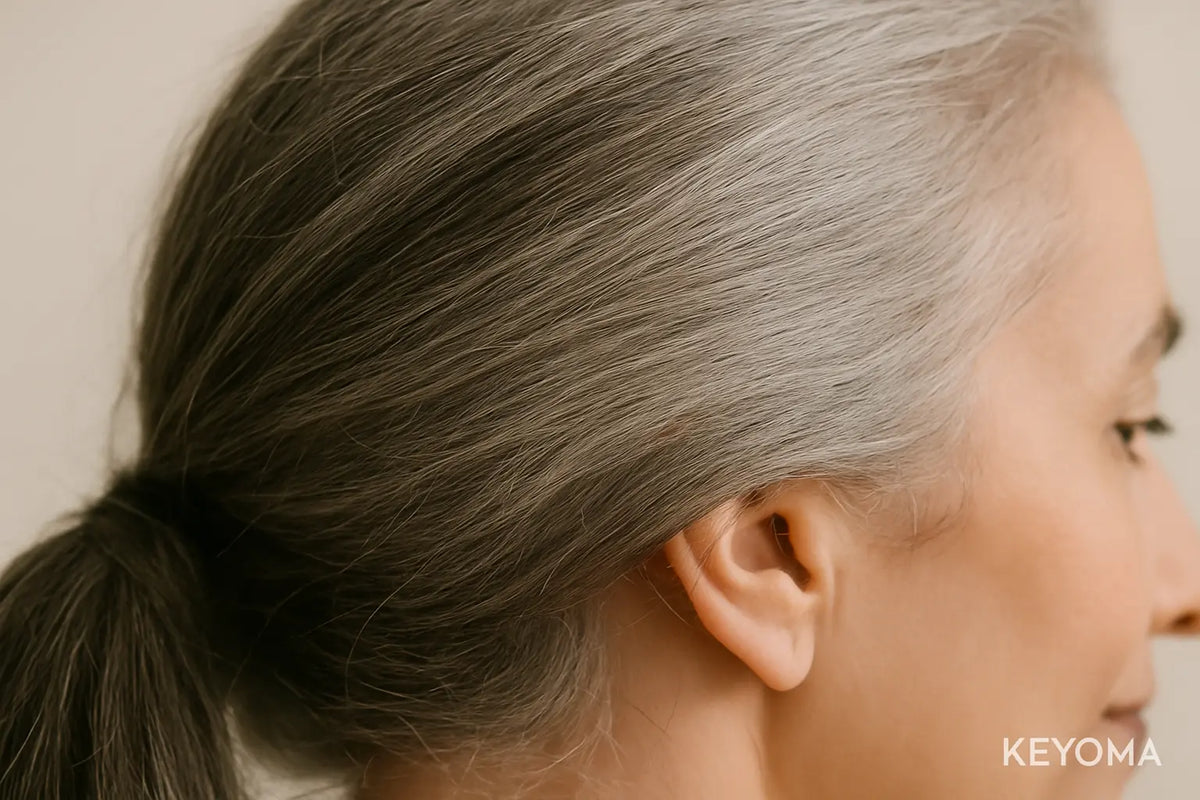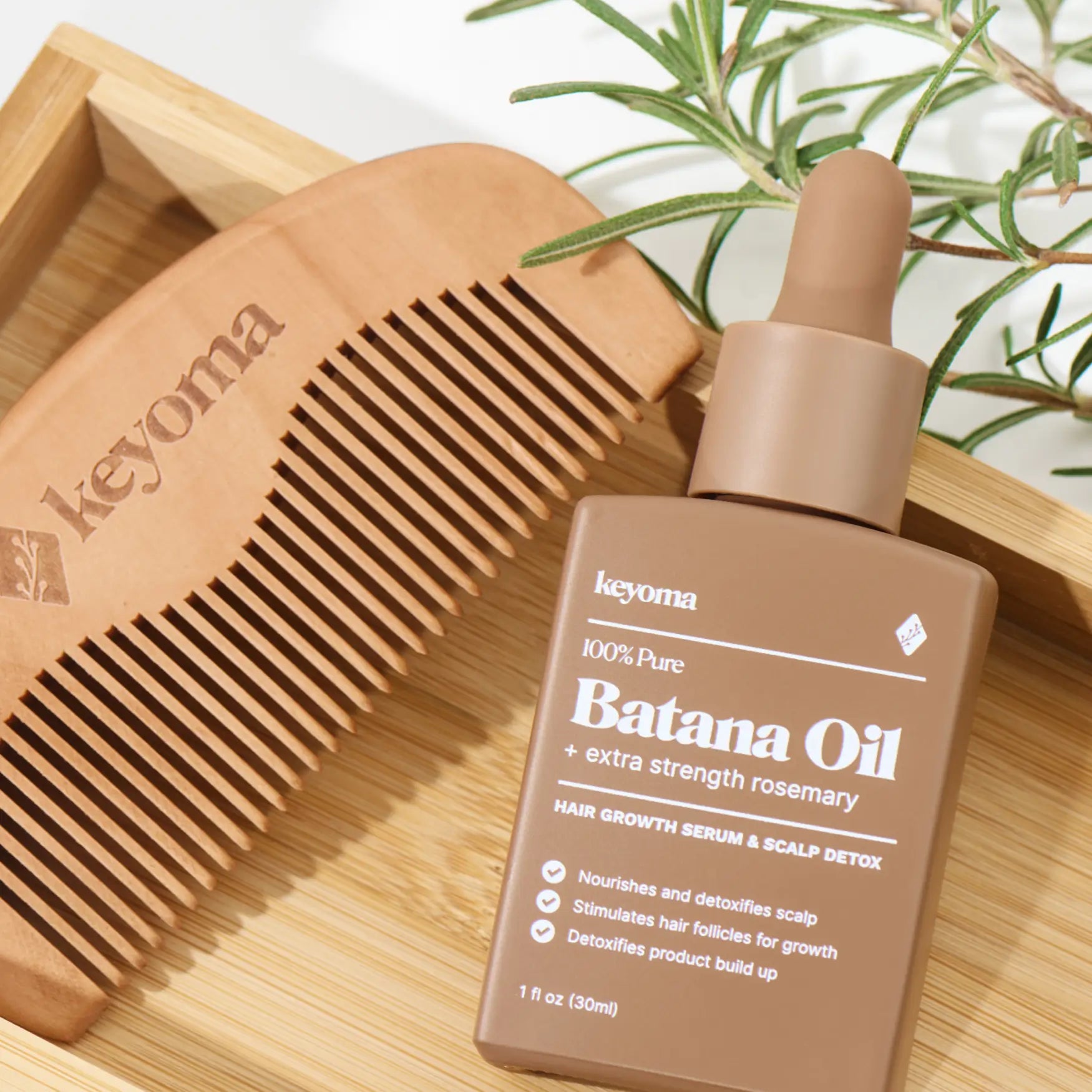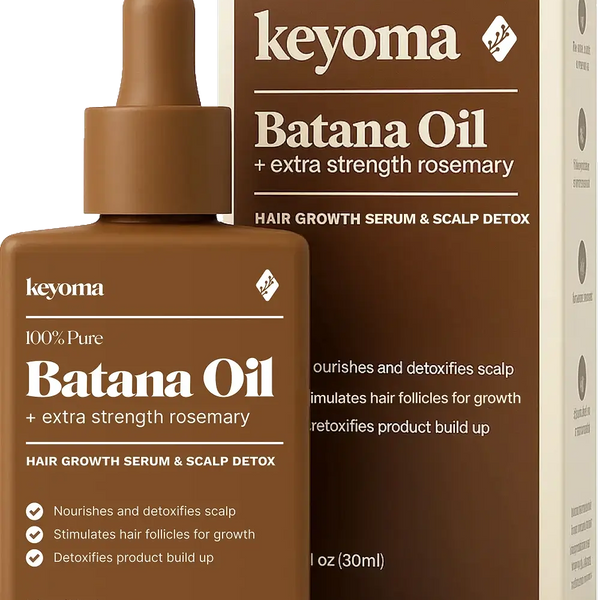In this article
Aging is a privilege, yes, but it’s also a process that doesn’t stop at the skin. Our hair changes too. The strands that once felt full, silky, and easy to manage start feeling rougher, more brittle, and somehow less alive.
But there’s a way to bring life back to aging hair. In this article, we’ll talk about natural oils that help replenish what time takes away. And while no oil can replace good nutrition or healthy habits, the right one can make every strand look and feel renewed again.
Key Takeaways
-
Natural oils help restore moisture, elasticity, and shine in aging hair.
-
Regular scalp massage with nourishing oils improves circulation and comfort for seniors.
-
Consistent, light application gives better results than heavy, occasional treatments.
Why Hair Changes With Age
As we age, our hair goes through changes that can make it look and feel different. Thinner, coarser, perhaps more fragile than before. These are the result of biological changes that affect the scalp, follicles, and hair shaft itself.
Below, we’ll look at what’s happening beneath the surface and why mature hair behaves the way it does. This way, we can choose the right natural oils to counter them.
Slower Oil (Sebum) Production
As the scalp ages, sebaceous glands become less active, producing fewer natural oils. This drop in sebum leaves strands less lubricated, which means moisture escapes faster.
As a result, hair looks dry, dull, or rough to the touch.
Without that thin oily coating, the cuticle layer—your hair’s outer shield—loses flexibility and starts lifting slightly, allowing more water loss. That’s why older hair often feels brittle and tangles easily.
Natural oils rich in fatty acids, such as oleic and linoleic acid, can help replenish what your scalp no longer makes as much of.
Gray Hair Cuticle Becomes Rougher
When pigment (melanin) fades, hair doesn’t just change color. The loss of melanin alters the internal structure of each strand, making the cuticle more porous and uneven.
This rougher surface scatters light differently, so silver or gray strands can appear dull or wiry. The lifted cuticle also traps moisture unevenly, which leads to frizz and unpredictable texture.
Oils high in antioxidants and smoothing lipids, like squalane or argan oil, help coat the cuticle, restoring smoothness and shine while guarding against oxidative stress that accelerates yellowing in gray hair.
Hormonal Shifts
Hormonal balance, particularly estrogen and progesterone levels, affects hair density and growth cycles.
During menopause, lower estrogen means follicles receive less stimulation to stay in the growth (anagen) phase, resulting in shorter, finer strands and more visible thinning around the crown or part line.
Circulation to the scalp may also slow, further reducing nutrient delivery.
Supporting the scalp with massage and nutrient-dense oils, especially those containing castor or rosemary extracts, can help nourish follicles and keep the scalp barrier resilient.
The Best Natural Oils for Aging Hair
Argan Oil
Best for Restoring Shine and Smoothness
Argan oil is often called “liquid gold” for a reason. Rich in vitamin E, oleic, and linoleic acids, it helps seal the cuticle and fill in microscopic cracks along the hair shaft.
This restores light reflection and softness in dull, coarse strands.
The antioxidants also neutralize oxidative stress that speeds up aging and yellowing in gray hair. For fine or color‑treated hair, use just a few drops on damp lengths to prevent build‑up while maintaining a silky finish.
Jojoba Oil
Best for Balancing Scalp Moisture
Jojoba oil closely mimics human sebum, which makes it ideal for replenishing what aging scalps naturally lose.
Because of its wax‑ester composition, it absorbs quickly without heaviness. This helps the scalp barrier stay flexible and less prone to flakiness.
Massage a small amount into the roots before shampooing to dissolve buildup or apply lightly after washing to lock in hydration.
Jojoba oil is especially useful for those who experience both dryness and greasiness at once.
Coconut Oil
Best for Strength and Breakage Protection
Coconut oil contains lauric acid, a rare fatty acid that can penetrate deep into the hair cortex. This ability reduces protein loss during washing and styling, keeping strands resilient and less prone to split ends.
For older adults and seniors, this is especially helpful since aging hair tends to have a weaker protein structure and lower moisture content.
Regular use forms a protective layer that minimizes swelling and shrinkage cycles, two key causes of structural weakness in mature hair.
When used as a pre-shampoo treatment once or twice a week, it also softens coarse or gray textures that tend to feel wiry or dry.
Over time, it forms a light barrier that keeps swelling and shrinkage cycles in check, helping your hair stay smooth, manageable, and resilient.
Rosemary Oil
Best for Scalp Circulation and Growth Support
Rosemary essential oil stimulates blood flow to the follicles and has been shown in small clinical studies to perform comparably to 2% minoxidil over several months of use.
It’s thought to extend the anagen (growth) phase and improve nutrient delivery to the roots.
Always dilute it with a carrier oil—like jojoba or grapeseed—before massaging into the scalp. With consistent use, it can help improve density and slow visible thinning linked to hormonal shifts.
Castor Oil
Best for Fuller‑Looking Edges and Fragile Areas
Thick and rich in ricinoleic acid, castor oil creates an occlusive film that traps moisture and reduces breakage in fragile spots such as edges, temples, or thinning brows.
Its viscosity makes it perfect for targeted night treatments rather than all‑over application. Mixing it with lighter oils like squalane or argan helps spreadability while keeping the same strengthening benefits.
Some prefer cold‑pressed Jamaican black versions for extra nutrients, though both types work well.
Baobab Oil
Best for Elasticity and Resilience
Baobab oil contains omega‑3, ‑6, and ‑9 fatty acids that replenish lost lipids in the hair cuticle, improving elasticity and reducing brittleness.
For older or senior users whose hair has lost spring and flexibility, this oil helps strands bounce back and resist breakage. It’s especially good as a leave‑in conditioner on damp hair, offering a soft, moisturized feel without weight.
Marula Oil
Best for Smoothness and Shine
Another oil that can stand side by side with argan oil as a natural go-to for smoothness and shine is marula oil. It delivers rich antioxidants and amino acids that help smooth the hair’s outer layer while guarding against environmental stress.
Aging hair, often exposed to years of UV and heat, benefits from marula’s lightweight protective film that brings back a healthy, youthful sheen. For fine or gray hair, just a few drops on the mid-lengths after styling can restore that sleek, polished look.
Squalane
Best for Lightweight Conditioning and Frizz Control
Squalane, a stable hydrogenated form of squalene found naturally in skin lipids, offers breathable hydration ideal for aging scalps and delicate strands.
Like jojoba, it mimics natural sebum, helping to reduce dryness without greasiness.
For seniors who prefer low‑maintenance care, a small amount of squalane tames frizz, adds slip, and protects silver or fine hair from yellowing and roughness caused by oxidation.
Batana Oil
Best for Reviving Gray and Brittle Hair in Seniors
Batana oil, derived from the American oil palm, is naturally rich in oleic acid, tocotrienols (a form of vitamin E), and carotenoids—all of which work to restore softness and tone down dullness in aging hair.
For seniors, it helps replenish the scalp’s lipid barrier, soften wiry silver strands, and protect against oxidative stress that leads to yellowing. Its warm tone also subtly enhances the natural hue of gray or salt‑and‑pepper hair without tinting it.
Warm a few drops between your palms and apply from mid‑lengths to ends or use as a weekly scalp treatment to keep mature hair glossy and nourished.
Tips on How to Use Natural Oils for Better Results
Whether you’re the one applying the oils or helping a parent or grandparent with their routine, these tips make it easier to see real improvements in softness, shine, and scalp comfort.
-
Start with clean, slightly damp hair. Oils absorb better when the hair is lightly towel‑dried instead of dripping wet. This helps seal in moisture without feeling greasy.
-
Warm a few drops before applying. Rubbing oil between your palms for a few seconds makes it spread more evenly and helps older hands work it gently through the strands.
-
Focus on the ends and thinning areas. Aging hair often dries faster at the ends and around the hairline. Concentrating the oil here protects the most fragile parts.
-
Massage the scalp slowly. Gentle circular movements increase blood flow and help relax tension. This is especially soothing for seniors dealing with a dry or itchy scalp.
-
Use the right amount for your hair type. Fine or gray hair only needs a few drops, while coarse or thick textures can handle more. Too much can make the hair heavy.
-
Protect your pillow or clothing. If using oil overnight, cover the hair with a silk scarf or use a satin pillowcase to prevent staining while keeping strands smooth.
-
Do a patch test first. Mature skin can be more sensitive. Apply a small amount behind the ear or on the wrist before using any new oil regularly.
Frequently Asked Questions (FAQs)
Can oils help regrow thinning or aging hair?
Yes, certain natural oils can support regrowth and strengthen thinning or aging hair. They don’t work like prescription treatments, but they improve scalp health, circulation, and follicle nourishment, all of which create better growth conditions.
Rosemary, castor, and batana oils are especially known for stimulating follicles and minimizing age-related thinning when used consistently over months.
Is rosemary oil safe for seniors to use daily?
Yes, rosemary oil is generally safe for seniors to use daily when diluted properly. Always mix a few drops of rosemary essential oil with a carrier like jojoba or grapeseed oil before applying to the scalp.
Seniors with sensitive skin should start with every other day to watch for irritation.
Which oils help with dryness and scalp itch in older adults?
Jojoba, coconut, and baobab oils are the best for easing dryness and scalp itch in older adults. They replenish moisture and soothe irritation without clogging pores. Regular gentle massage with these oils also improves blood flow and comfort.
What’s the best oil for gray frizz and coarse texture?
Argan and marula oils are the best choices for taming gray frizz and coarse texture. Both contain antioxidants and fatty acids that smooth the cuticle, restoring softness and light reflection.
How long does it take to notice improvement in mature hair?
It usually takes about four to eight weeks to notice improvement in mature hair when using natural oils regularly. That’s because hair growth and repair happen slowly, especially as cell turnover and scalp circulation naturally decline with age.
Treat Your Aging Hair With the Right Oils
Few things care for aging hair the way natural oils do. They replace the natural sebum our scalps lose over time, bring back softness, and protect fragile strands from breakage and dullness.
If I had to pick my top two, I’d go with batana and rosemary oil. I’ve used them myself and shared them with my family for years, and they’ve consistently helped us keep our hair healthy and resilient.
That said, you can always start with classics like coconut or jojoba if those are what you already have at home.
Want more easy, practical hair care tips? Head over to the Keyoma Blog where we share guides, research‑backed advice, and simple routines that actually work for mature and aging hair.
Featured Product
100% Pure Batana Oil + Rosemary









